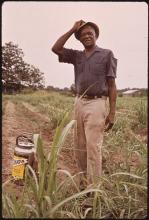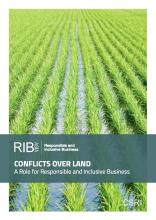Land Library
Welcome to the Land Portal Library. Explore our vast collection of open-access resources (over 74,000) including reports, journal articles, research papers, peer-reviewed publications, legal documents, videos and much more.
/ library resources
Showing items 1 through 9 of 495."For millions of people living in the world’s poorest countries, access to land is a matter not of wealth, but of survival, identity and belonging.
In line with the conventional view that customary land rights impede agricultural development, the traditional tenure system in Nigeria has been perceived to obstruct the achievement of efficient development and agricultural transformation.
Food First Backgrounder, Spring 2014, Vol. 20, No. 1
Introduction: Land, Race and the Agrarian Crisis
This briefing paper makes the case for proactive business engagement in respecting land rights and ensuring legal, fair and inclusive practices on land use, access to natural resources and equitable development opportunities.
The project “Enhancing Women’s Assets to Manage Risk under Climate Change: Potential for Group-Based Approaches” aims to help poor women farmers and pastoralists in Africa south of the Sahara and South Asia—especially those in Ethiopia, Kenya, Mali, and Bangladesh—manage risks under climate chang
This policy note summarizes research that builds on existing studies on the gender-differentiated impacts of shocks on household asset holdings in Bangladesh, which is among the countries most vulnerable to climate change because of its densely populated coastal area and large population living b
Ein Jahr bevor die Frist zur Erreichung der Millenniums-Entwicklungsziele im Jahr 2015 abläuft, bietet der Welthunger-Index (WHI) einen facettenreichen Überblick über die Verbreitung des Hungers und trägt neue Erkenntnisse darüber in die weltweite Debatte, wie Hunger und Mangelernährung verringer
This paper investigates the effect of climate variables (precipitation and temperature) on food security indicators from 1961-2011 for 10 Eastern and Southern African countries by estimating fixed effects models.






